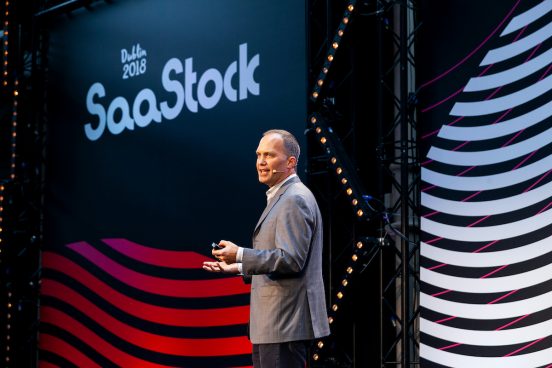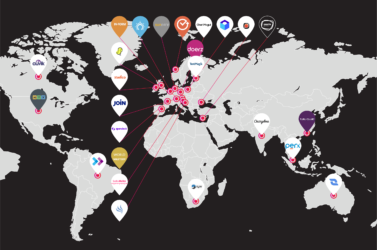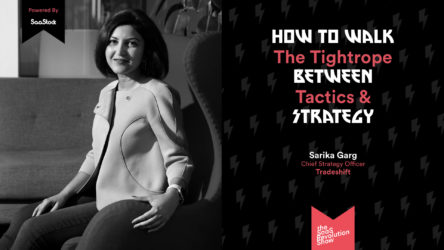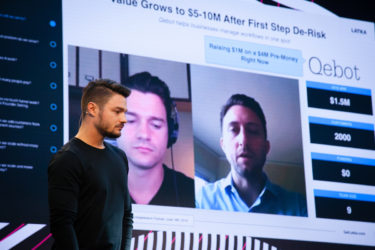On the day before the official program of SaaStock18 began, we hosted 8 bootcamps around Dublin as part of SaaS.City, our 1-day accelerator. One of the most popular bootcamps on the day covered the art of being a great SaaS CEO.
The room was filled with 50 CEOs from across Europe — plus some from the US, India, and Saudi Arabia. The challenges they had were everything from hiring, translating company vision to the team, and retaining great people, all the way to making better decisions as company leaders and staying resilient throughout the journey. Matthew Bellows, Chairman of Yesware, Carrie Osman, Founder and CEO of Cruxy & Company, and John Thompson, Chairman of Briggs Associates offered their vital advice.
The Reality of being a SaaS CEO
Being a CEO isn’t a glossy magazine cover or a rockstar persona. It comes with several real world downsides and risks.
- Runway problems
“We were always thinking of the next round. Close shaves with nearly $0 in the bank. The night before we closed our first deal, we learned the terms needed to change after six months of negotiation. We had 2 weeks of runway in the bank. We were desperate; they had all the power and could make the rules,” John Thompson shared.
- Competitor Problems
- Customer Problems
- Lawyers. (Scary.)
- Co-founder problems
- Health, Death, and Divorce
- Firings. They aren’t fun. You lose friends.
“We like to invest in resilient CEOs,” say the investors. But all the stress and turmoil has to go somewhere, even if you don’t let it get to the surface. Blood pressure, heart health, and wellness should be a priority.
On their own, each is difficult to manage and combined it becomes quite the struggle. Below are a few of the more obvious ones.
Elements of the Entrepreneurial Struggle
- You will be awash with fight or flight chemicals, which will cause adrenal fatigue
- Many times you will have a lack of perspective
- There will be an inevitable impact on physical and mental wellbeing
- You will most definitely fall within the “it has to work” trap. Single-mindedness is great for shareholders but not great for you psychologically.
As an antidote to all of this, you will often hear what you need resilience. A lot of it. However, resilience is like a leaky bucket, it’s not limitless. What can you do to solve this?
1) Have a less leaky bucket. Lessen your stressors.
2) Pour more in the top. Do the right things to restore yourself.
Here are a few ideas on how to be more resilient, to have more support and how to require less resilience of yourself.
How to build resilience as a SaaS CEO
Exercise!!! Can’t be said enough times.
Sleep. John recommends the book, Why We Sleep.
Watch your diet. And don’t use booze to relax!
Mindfulness. Explore a practice that works for you.
Operate in < 13-hour days. You can do it.
Take real breaks. Going to the beach and checking email on your phone doesn’t work. Do activities that consume your mind. John took up snowboarding in his 40s.
How to seek support as a SaaS CEO
Get a great executive assistant
Find someone with the right energy and competency. Someone who can take on a variety of tasks. Someone you enjoy being around, who can make your day better.
Get a great coach (therapist, non-directive, mentor, consultant)
It might take some time to find the right one but it’s worth it. Many SaaS CEOs who attended the bootcamp admitted they have coaches. However, be careful when you choose the coach. Just because a colleague or investor recommends their own coach, don’t feel pressured to make it work if it doesn’t feel right.
Get a great chairman
The chairman does have power; they’re a director. They have influence on the board. They’re not your boss, but there’s a bit of that dynamic in the chairman relationship.
“Ask yourself: is this the person I would call if shit hit the fan?”
Do you trust them? If so, bring them on as a chairman. They’ll help you through dark decisions.
Work on perspective
Things are never as good as they seem, or as bad as they seem.
“We generally have a dramatized perspective on things.”
Have a plan
Step back and look at your life with a wide lens.
How to need less resilience as a SaaS CEO (a.k.a. how to ease your stressors)
Remember the 2% rule. Delegate! You don’t need to work twice as hard. The whole team can work a little harder together.
Make the short term tough. Do the hard things NOW. “Take ambiguity out of the org chart.”
Customer, culture & top team. Not just how do they work with you, but how do they work together?
Coaching. Helps your judgment and perspective and coming to hard choices.
Cash. Raise more money and spend less.
“I let $800k sit in the bank for seven years. I may have made 20% less revenue than possible, but I’m glad I had that money safe” John admits.
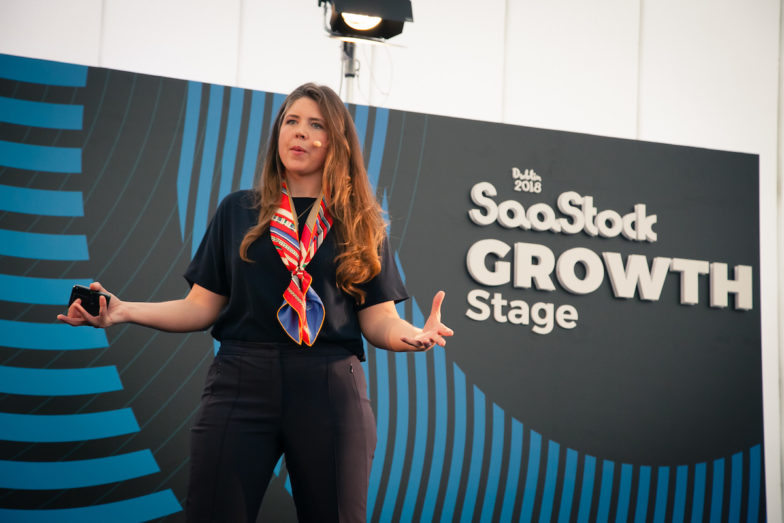
Hiring
Beyond personal development, hiring is one of the overwhelming topics of interest to any CEO. Fundamental questions such as: How do you find the right people? How can you trust they are a fit not only for the role, but also for the team? Are never easily answered.
Everyone would agree that a good hire is about finding the technical fit and the cultural fit in one candidate. Easier said than done.
Hiring in a tough market
If you are based in a small place or a large place with big competition, consider remote work and/or offices in other locations. Pretty straightforward, has been done many times before and can work.
How to find the right talent?
Find your target companies, which challenge people in the same ways you do, and then recruit their former employees. Be careful with hiring expensive and experienced talent as they may not be flexible. Younger or less-experienced people who are more willing to be coached may be a far better option. Also stay alert for professional people who may not have sales experience but are eager for a career change.
Consider incorporating video into your application process
This is particularly valid for sales positions where personality is a huge factor in the role. Have the candidate speak about themselves, the company, and why they want to sell the product. This will give you a great first look at their approach and their attitude.
Is there such a thing as having the wrong background for a job?
Yes. A great example is sales. Not all sales experience is relevant. Huge brand name products or enterprise products have a completely different sales style from SaaS. SaaS sellers need to hunt and hustle, be tenacious and educate their buyers about the product.
Losing someone who was an influential part of the culture?
A replacement may fill the technical gap but not the cultural gap. Incorporate “culture fit” into the recruiting process somehow. Involve your team. Know who the best person is to run recruitment and to discern culture fit. Who is a good judge of character?
Keeping everyone Happy
Team buy-in!
You are so invested in your company, it’s everything for you. It probably hurts when you realize that your top employees aren’t as invested as you. That, however, is fine, maybe even preferable, if your exec or senior or management team isn’t 100% devoted, the way you are. That is because then they have the mental and emotional distance to preserve themselves and survive the rough times and will ultimately suffer less from burnout. If you want them to do anything for you, you first need to do anything for them.
Share equity with employees
If you don’t give away shares, how can you attract great people? How can you convince them to walk away from a great career with security and benefits? Matthew believes that sharing equity isn’t just about offering tangible benefits in a job package, but about bringing people into the fold. The VP wants to feel like a partner, not a salaried employee.
When drawing up job offers, your shares are probably not worth anything. “When financial planning, you can zero it out.” But with some hard work, the options WILL be worth something.
If you do win, you want everyone to win! You want them to make money because they probably did most of the work. Share in it. And for tax and valuation reasons, it’s easier to issue those options early on.
Sharing equity is easier and more hands-off compared to a complex compensation structure. It’s an ensured reward, rather than bonuses tied to aggressive goals, which even the hardest working employee may or may not hit.
All that said, what are some ballpark percentages to give away:
- Entry level – give a very very small percentage as a symbol of ownership. With each promotion offer incremental increases
- C level, .5-2.5%
- New CEO, 3-5%
Align the team on objectives
Start by creating Key Results (KRs) that are for the entire company, rather than for individual team silos. You can then break down KRs by “team objectives” – so everyone is working on the same goal but through different actions.
Someone may wonder, why doesn’t a department own a certain objective, say product management. It’s because goals are more holistic, not just technical. Any change in product also involves changes in sales, in marketing, in support.
Why the difficulty of being a CEO counts
To answer that Matthew quoted the Dalai Lama:
“If you contribute to other people’s happiness, you will find the true goal, the true meaning of life.”
According to Matthew, CEOs are especially poised to contribute to other people’s happiness: their customers, their employees, their families. Once you focus on that, you’ll discover the meaning of life on your own.
The CEO bootcamp was not the only occasion when Matthew Bellows and Carrie Osman took the stage. At SaaStock18, Matthew spoke at large about discovering a sales process while Carrie got in depth on the gist of SaaS pricing strategies. You can watch both presentations as well as over 40 hours of actionable, practical and strategic content that we recorded at SaaStock18. Grab the SaaStock On-Demand pack now.
